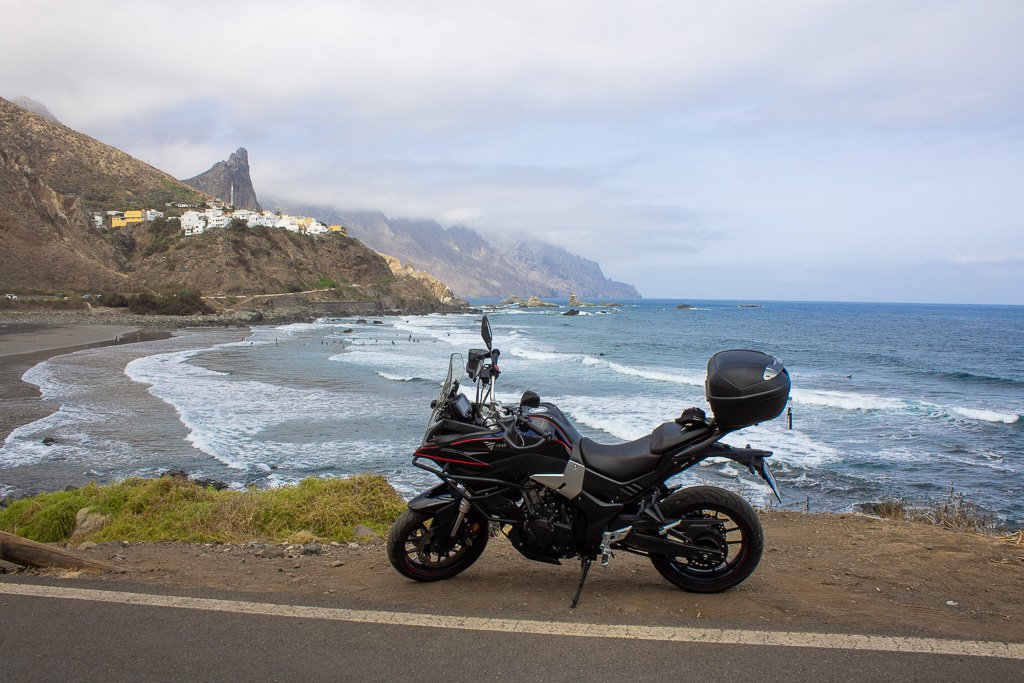
A fascinating motorcycle route
Anaga Massif and the northeastern coast of Tenerife
The Anaga massif and the northeast of Tenerife are two areas of great natural, historical and cultural interest on the Canary Island. It is a mountainous formation that extends from Punta de Anaga to Cruz del Carmen, with altitudes exceeding 1000 meters.
It is one of the oldest areas of the island, with an estimated age of between 7 and 9 million years. Its abrupt relief and humid climate favor the existence of a great diversity of habitats, among which the laurel forest stands out, home to numerous endemic species of flora and fauna.
For its ecological and scenic value, the Anaga massif was declared a rural park in 1994 and a biosphere reserve by Unesco in 2015.
The northeast of Tenerife comprises the municipalities of Santa Cruz de Tenerife, San Cristóbal de La Laguna and Tegueste, which share part of the Anaga massif. This area has a rich history and culture, as it was the first place where the Spanish conquistadors settled in the 15th century.
The route starts in Puerto de la Cruz and continues along the TF-5 highway (we will avoid the big cities to spend more time on another route) until we reach San Andrés, a coastal town with a beautiful golden sandy beach called Las Teresitas.
From there, you enter the Anaga Rural Park and travel along its roads full of curves and viewpoints, passing through places like Taganana, Almáciga, Benijo, Chamorga or the viewpoint Pico del Inglés.
Then you leave the park through Las Mercedes in the town of La Laguna, towards Punta del Hidalgo, passing through towns like Tegueste, Tejina or Bajamar.
This is a motorcycle route that allows you to get to know the Anaga Rural Park, an area of humid and green forests that is home to a great biodiversity and numerous trails.



The route continues back along the same road towards Valle Guerra, passing through Tacoronte until reaching the Garañona viewpoint and the Parque de los lavaderos in El Sauzal.
On the way back, you can stop at the fishing village of El Caletón, in the town of La Matanza, where you can take a refreshing dip, before ending the route with the last stop on the coast of Santa Úrsula, where you will find La giganta, a stone statue decorated with flowers and a Bunker built in 1942.
The route is about 170 km long and takes approximately 4 and a half hours of non-stop driving.






